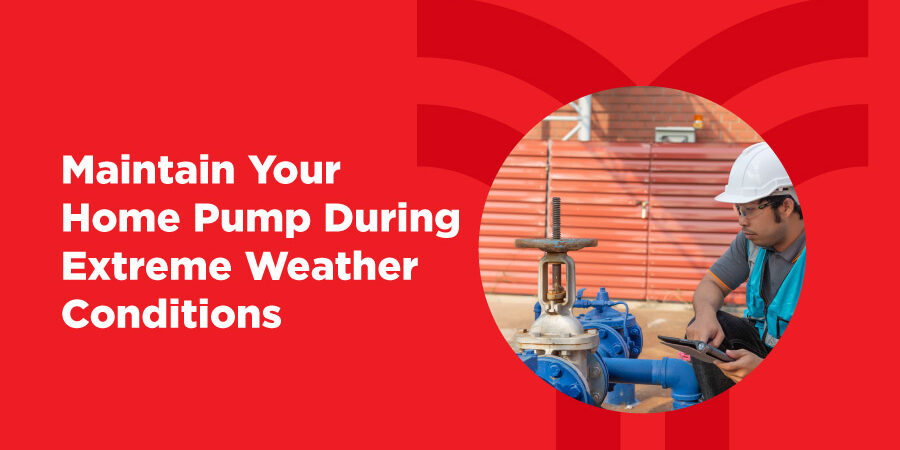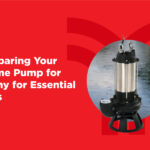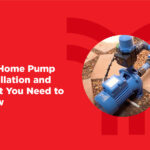Maintain Your Home Pump During Extreme Weather Conditions
Your home pump is crucial to keeping your household functioning properly, especially during extreme weather conditions. No matter what kind of house pump you have—a sump pump, well pump, or any other—regular maintenance keeps your system working when you need it most. This blog will walk you through the procedures you need to take to keep your Pressure Booster Pump maintained during severe weather, assisting you in preventing problems and expensive repairs.
Understanding the Importance of Pump Maintenance
It’s important to understand why keeping your house pump is critical, especially during extreme weather conditions, before getting into detailed maintenance advice.
Prevents Flooding: A well-maintained sump pump can stop basement flooding during periods of high precipitation or snowmelt, safeguarding both your possessions and the foundation of your house.
Guarantees Water Flow: In households that use well water, having a working well pump is essential to maintaining a steady flow of water, particularly in the winter or during dry spells.
Guards Against Power Outages: Power outages are frequently caused by severe weather. If your pump has a backup power source, it will always run, even in the event of an electrical blackout.
Preparing your Pump for Extreme Cold
Your house pump may suffer from frozen pipes and other issues during the severe winter months. Here’s how you should get ready:
Insulate Pipes and Pump: Insulating your pump and its pipes is one of the best ways to keep it safe from extremely low temperatures. By doing this, freezing is avoided, which could lead to pipe bursts and pump failure. Cover exposed pipes with foam or pipe insulation.
Keep the Pump House Warm: To keep the temperature above freezing, if your pump is kept in a cold basement or an outdoor shed, you might want to use a space heater or heat lamp. When using heaters, exercise caution to make sure they are secure and won’t spark a fire.
Drain and Store Non-Essential Pumps: It is advisable to drain and store any pumps—such as irrigation pumps—that aren’t in use during the winter months indoors. By doing this, any leftover water is kept from freezing and causing harm.
Check for Ice Building Often: Keep an eye out for any indications of ice building in your pump system during extended cold spells. Use a heat gun or warm clothes to quickly defrost any ice that you come across.
Protecting your Pump from Extreme Heat
Extreme heat can also harm your pump, just as cold weather might. Elevated temperatures may result in pump failure, poor efficiency, and overheating.
Assure Appropriate Ventilation: To avoid overheating, pumps—especially those located in confined spaces—need adequate ventilation. Verify that there is enough airflow surrounding the pump and, if required, think about installing a ventilation fan.
Check for Overheating Signs: During hot weather, periodically check your pump for any overheating symptoms, such as odd noises, low water pressure, or frequent on-and-off cycling. Before pursuing further investigation, stop the pump and allow it to cool down if you observe any of these problems.
Maintain Ideal Water Levels: For proper operation, pumps require an adequate amount of water. Extreme heat can cause reservoirs or wells to lose water, which means the pump has to work harder. To keep the water from running dry, regularly check the water levels and, if needed, modify the pump’s settings.
Examine Seals and O-rings: Heat can cause your pump’s seals and O-rings to expand or fracture, which can result in leaks and decreased efficiency. To maintain optimum performance, routinely check these parts and replace them as necessary.
General Maintenance Tips for All Weather Conditions
Some general maintenance procedures will help keep your house pump operating at its best all year long, regardless of the weather.
Plan Frequent Inspections: Regular inspections regularly might identify possible issues before they worsen. A specialist can inspect your pump for leaks, worn-out components, and other problems that might be affecting its function.
Replace Worn Parts: As your pump ages, its components will require replacement due to wear and tear. To guarantee your pump works well, regularly inspect parts including seals, bearings, and impellers, and repair them as needed.
Maintain a Clean Environment Around the Pump: Debris, dust, and dirt can gather around your pump, causing clogs and other problems. To guarantee ideal airflow and efficiency, keep the space surrounding your pump clean and clear of obstacles.
Monitor for Unusual Sounds: Odd noises, such as rattling, screaming, or grinding, may point to a pump issue. To stop more harm from occurring, look into the matter right away if you hear anything strange.
Check the Power Supply: Make sure the power source for your pump is dependable and steady. Check the connections, wiring, and power supply regularly to prevent disruptions during crucial times.
To keep your house safe and your water supply steady during severe weather, you must maintain your Submersible Water Pump at Home. These pointers will help you avoid frequent pump problems, prolong the life of your machinery, and save money on maintenance. No matter the weather, regular pump maintenance will keep your system operating efficiently, whether you’re dealing with intense heat, cold, or rain.


